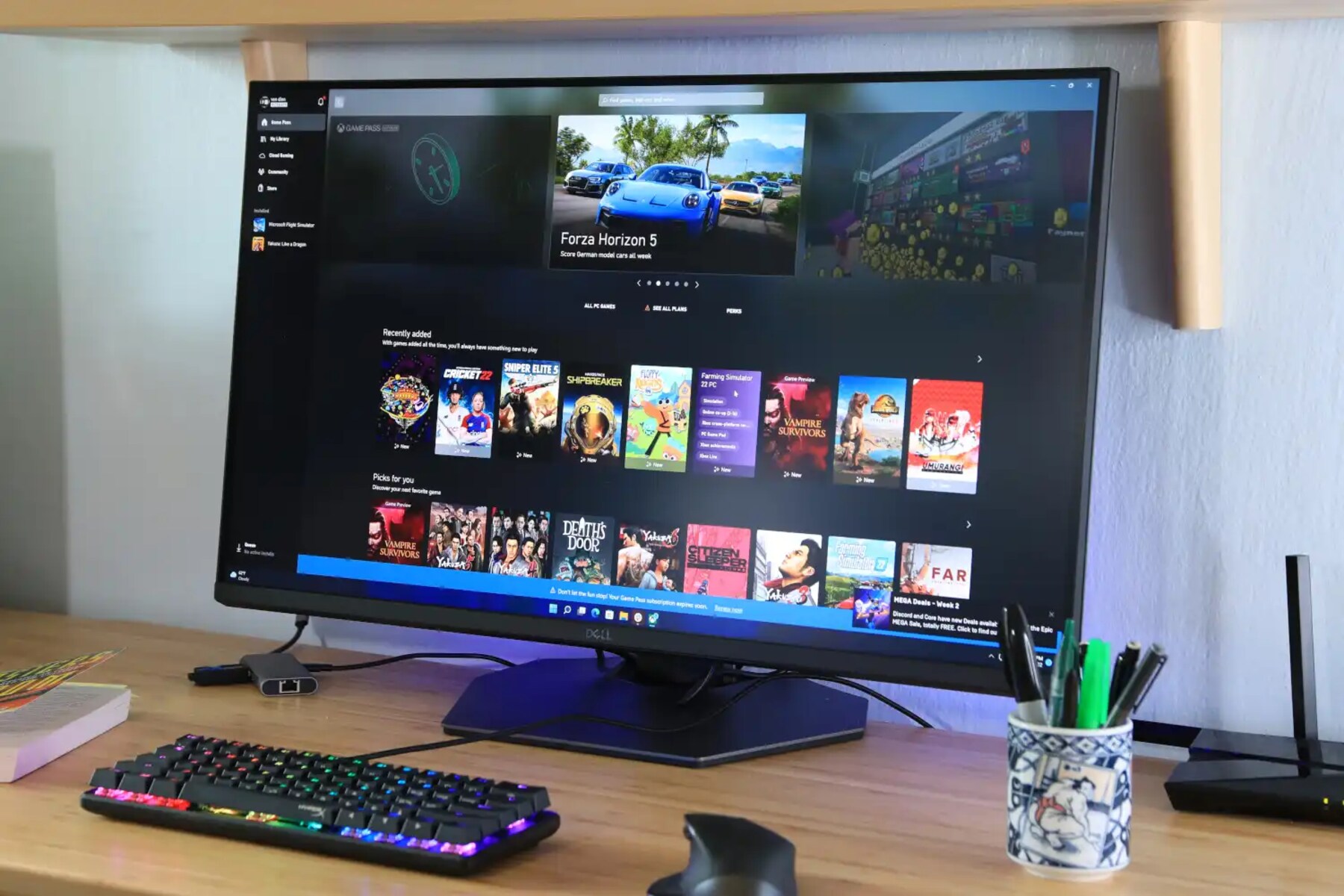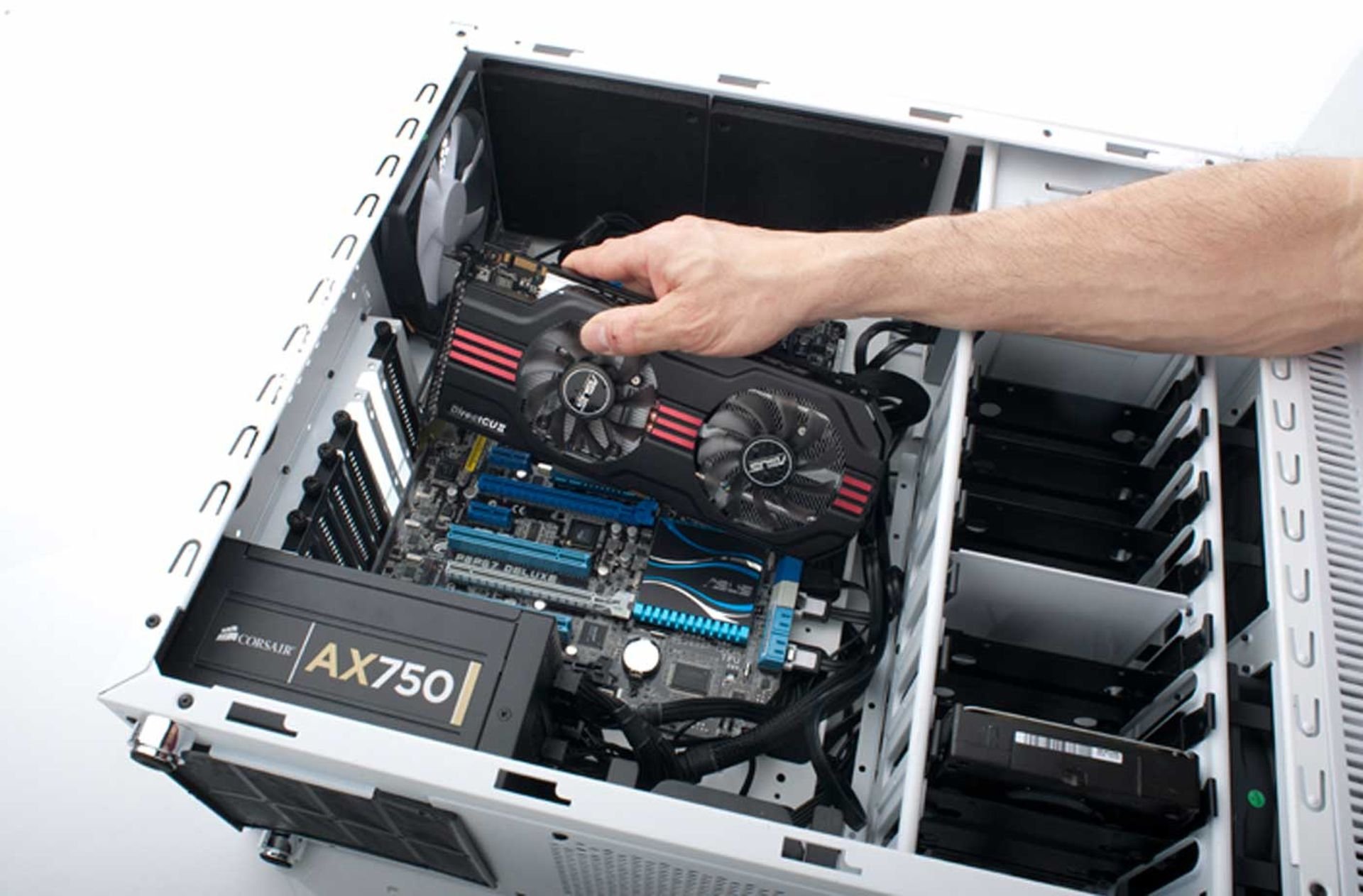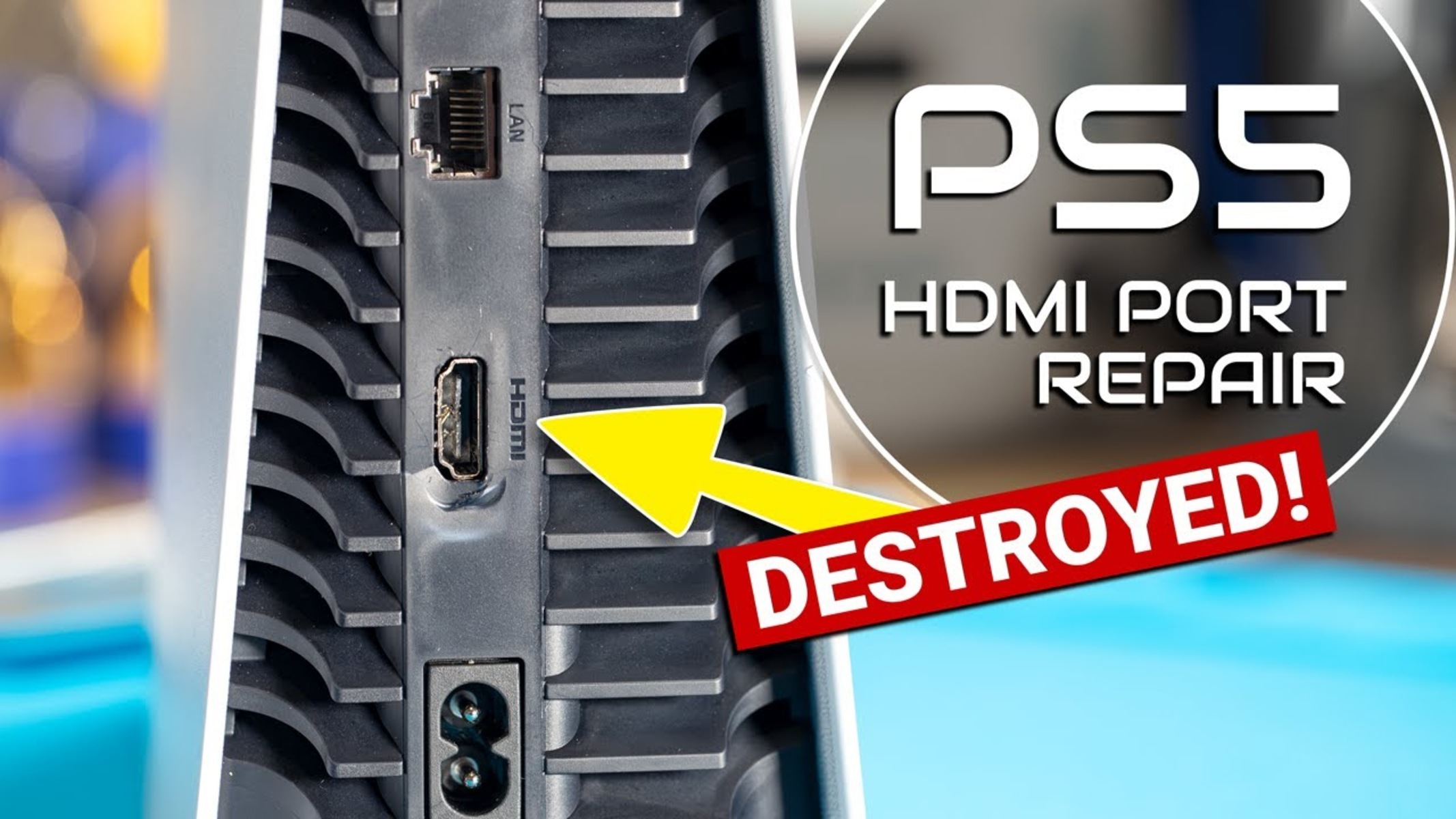Set Up Your Gaming Monitor: Adjusting the Display Settings
When you get a new gaming monitor, the first step is to ensure that it is properly set up to maximize your gaming experience. One crucial aspect of this is adjusting the display settings to suit your preferences and requirements. Here are some key considerations to keep in mind:
- Brightness: Start by adjusting the brightness level. A monitor that is too bright can cause eye strain, while one that is too dim may make it difficult to see details. Find a balance that works for you.
- Contrast: Adjusting the contrast can help differentiate between light and dark areas in games. A higher contrast ratio will enhance the overall image quality and make details more visible.
- Color Temperature: Experiment with different color temperature settings to find the one that appeals to you. Warmer tones tend to have a reddish hue, while cooler tones have a bluish tint.
- Gamma: Gamma settings control the brightness of mid-tones. Adjusting gamma levels can improve the overall visibility of details in dark or bright areas of the game.
- Sharpness: While it’s tempting to set sharpness to the maximum, it can result in oversharpened images and introduce unwanted artifacts. Find a balance that maintains detail without sacrificing image quality.
Remember, these settings may vary depending on the specific brand and model of your gaming monitor. Consult the user manual or the manufacturer’s website for detailed instructions and recommended settings for your particular model.
By adjusting the display settings, you can fine-tune your gaming monitor to suit your preferences and optimize the visuals for a more immersive gaming experience. Take the time to explore and experiment with the various settings until you find the perfect combination that enhances your gameplay.
Install the Latest Drivers for Your Gaming Monitor
When setting up your new gaming monitor, it’s crucial to install the latest drivers to ensure optimal performance and compatibility with your system. Monitor drivers contain specific software that communicates between your computer and the monitor, allowing for proper functioning and unlocking advanced features. Follow these steps to install the latest drivers:
- Identify the Monitor Model: Determine the exact model of your gaming monitor. This information is typically found on the back of the monitor or in the user manual.
- Visit the Manufacturer’s Website: Go to the official website of the monitor’s manufacturer. They usually provide support and driver download sections where you can find the latest drivers for your specific model.
- Download and Install the Drivers: Locate the driver download for your model on the manufacturer’s website. Ensure that you select the correct operating system version. Download the driver file and follow the on-screen instructions to install it on your computer.
- Restart Your Computer: After the driver installation is complete, restart your computer to allow the changes to take effect.
By installing the latest drivers, you can potentially resolve compatibility issues and experience improved performance on your gaming monitor. These drivers often include optimizations and bug fixes that enhance the overall user experience and ensure seamless operation.
Remember to periodically check for driver updates, as manufacturers release new versions to address any known issues and provide additional features or enhancements. Regularly updating your monitor drivers is essential to get the most out of your gaming experience.
Calibrate Your Gaming Monitor for Optimal Visuals
Calibrating your gaming monitor is an essential step to ensure accurate and vibrant visuals while gaming. Out of the box, monitors can often have default settings that may not accurately represent colors or contrast, resulting in a less immersive gaming experience. Follow these tips to calibrate your gaming monitor:
- Use a Calibration Tool: Consider using a hardware calibration tool or software application to accurately adjust the color settings of your monitor. These tools help achieve a more precise calibration, ensuring accurate colors and contrast.
- Adjust Brightness and Contrast: Use the monitor’s on-screen menu or calibration software to adjust the brightness and contrast settings. Aim for a balance that provides adequate visibility of details without washing out colors or losing definition in darker areas.
- Set Color Temperature: Experiment with different color temperature settings to find the one that suits your preferences. Cooler temperature settings give a bluish tone, while warmer settings result in a reddish hue. Choose the option that enhances the visuals to your liking.
- Fine-tune Color Settings: Use the color controls, such as hue, saturation, and color balance, to fine-tune and correct any color inaccuracies or adjustments needed for your specific monitor.
- Consider Professional Calibration: If you want the most precise calibration possible, consider consulting with a professional or using a calibration service. They have specialized tools and expertise to fine-tune your monitor’s settings for accurate color reproduction.
Calibrating your gaming monitor helps ensure that the colors and contrast are accurately represented, resulting in a more immersive and visually engaging gaming experience. Regularly check and recalibrate your monitor, especially if you notice any visual discrepancies or changes in its display quality over time.
Keep in mind that calibrating your monitor may vary depending on the specific brand and model. Consult the manufacturer’s manual or website for detailed instructions on calibrating your particular gaming monitor.
Choose the Right Resolution for Your Gaming Monitor
One of the key factors in maximizing your gaming experience is selecting the right resolution for your gaming monitor. The resolution determines the number of pixels available for displaying images, which directly affects the level of detail and clarity in your games. Here are some considerations to help you choose the optimal resolution:
- Native Resolution: Check the native resolution of your gaming monitor. The native resolution is the maximum resolution at which the monitor is designed to display images. It is recommended to set your games to this resolution for the best visual quality.
- Aspect Ratio: Consider the aspect ratio of your monitor. Common aspect ratios include 16:9, 16:10, and 21:9. Match the aspect ratio of your games to that of your monitor to avoid stretched or distorted images.
- Graphics Card Capability: Ensure that your graphics card can support the desired resolution. Higher resolutions require more processing power, so make sure your system meets the recommended requirements to avoid frame rate drops or lag.
- Screen Size: Factor in the size of your gaming monitor. Higher resolutions on larger screens provide more screen real estate and increased detail, whereas lower resolutions may result in pixelation on larger screens.
- Preference and Comfort: Ultimately, choose a resolution that suits your preference and gaming comfort. Higher resolutions offer crisp visuals, while lower resolutions can provide smoother performance on less powerful systems.
Remember that selecting a higher resolution may require adjusting in-game graphics settings to maintain a smooth and responsive experience. Finding the right balance between resolution and performance is crucial for an enjoyable gaming session.
Consider testing different resolutions to see which one best suits your gaming needs. Some monitors may offer additional resolution options, such as ultrawide or 4K, providing a more immersive and visually stunning gaming experience.
Before selecting a resolution, ensure that your computer and graphics card meet the necessary hardware requirements to support the chosen resolution. Consult the monitor’s user manual or manufacturer’s website for more information on recommended resolutions for your specific model.
Optimize Refresh Rate for a Smoother Gaming Experience
When it comes to gaming, having a high refresh rate on your monitor can greatly enhance the overall smoothness and fluidity of gameplay. The refresh rate refers to the number of times the monitor updates the image on the screen per second, measured in Hertz (Hz). Here are some tips to optimize the refresh rate for a smoother gaming experience:
- Check Monitor Capabilities: Determine the maximum refresh rate supported by your gaming monitor. Most modern monitors offer refresh rates of 60Hz, 120Hz, 144Hz, or even higher. Make sure your monitor is capable of higher refresh rates before proceeding.
- Adjust Graphics Settings: Ensure that your computer’s graphics settings are optimized to achieve high frame rates in games. Lowering graphical settings can help achieve higher frame rates, which can then be better displayed by a higher refresh rate monitor.
- Enable Adaptive Sync Technologies: If your monitor and graphics card support technologies like AMD’s FreeSync or NVIDIA’s G-Sync, make sure to enable them. These technologies synchronize the monitor’s refresh rate with the graphics card’s frame rate, resulting in smoother gameplay and reduced screen tearing.
- Experiment with Different Refresh Rates: Test varying refresh rate settings in games to find the sweet spot between smoothness and performance. Higher refresh rates can provide a noticeable improvement, but keep in mind that it may require a more powerful graphics card.
- Consider Overclocking: Some monitors allow for overclocking, which means setting a refresh rate higher than its default maximum. Be cautious when overclocking, as it can potentially strain the monitor and void warranties. Refer to the manufacturer’s guidelines for safe overclocking procedures.
Optimizing the refresh rate of your gaming monitor can elevate your gaming experience to a whole new level. The higher the refresh rate, the smoother and more responsive your gameplay will feel. However, it’s important to ensure that your computer’s hardware can support the desired refresh rate to avoid any performance issues.
Keep in mind that the difference between a 60Hz and, for example, a 144Hz monitor may be more noticeable to competitive gamers who require quick reflexes and smooth visuals. Casual gamers may not experience as significant of a difference, so choose a refresh rate based on your gaming preferences and needs.
Experiment with different refresh rate settings, consider enabling adaptive sync technologies, and always check for updated drivers to ensure the best possible refresh rate performance for your gaming monitor.
Enable FreeSync or G-Sync for Tear-Free Gaming
Tearing is a common issue in gaming that occurs when the refresh rate of your monitor is not synchronized with the frame rate output by your graphics card. This misalignment can result in visible horizontal lines or screen tearing, affecting the overall gaming experience. Technologies like FreeSync and G-Sync have been developed to address this problem and offer tear-free gaming. Here’s how you can enable these technologies:
- Check Compatibility: Ensure that your gaming monitor supports either AMD’s FreeSync or NVIDIA’s G-Sync technology. FreeSync is typically compatible with AMD graphics cards, while G-Sync works with NVIDIA graphics cards.
- Update Graphics Drivers: Make sure you have the latest graphics drivers installed on your computer. Visit the official websites of AMD or NVIDIA to download and install the latest drivers for your graphics card.
- Enable FreeSync or G-Sync: Open your graphics card control panel, such as AMD Radeon Settings or NVIDIA Control Panel, and look for the option to enable FreeSync or G-Sync. Depending on the specific software version, the option may be located under display settings or 3D settings. Enable the feature to enable tear-free gaming.
- Match Refresh Rate and Frame Rate: In some cases, you may need to adjust your in-game settings or use third-party software to ensure that the frame rate output of your graphics card matches the refresh rate of your monitor. This synchronization helps maximize the effectiveness of FreeSync or G-Sync.
- Test and Fine-Tune Settings: Play games and observe the difference with FreeSync or G-Sync enabled. Adjust graphical settings, including frame rate caps or V-Sync, to achieve the best balance between smooth gameplay and performance.
Enabling FreeSync or G-Sync technology on your gaming monitor can significantly reduce screen tearing and enhance the overall visual experience during gameplay. These technologies work by synchronizing the refresh rate of the monitor with the frame rate output of the graphics card, resulting in smoother, tear-free gaming.
While these technologies do require compatible hardware, they can greatly improve the gaming experience for both casual and competitive gamers. Enjoy smoother visuals in fast-paced games, improved motion clarity, and a more immersive gaming experience by enabling FreeSync or G-Sync.
Remember to consult the documentation and support resources provided by the manufacturer of your gaming monitor and graphics card for specific instructions on enabling and optimizing FreeSync or G-Sync for tear-free gaming.
Adjust Brightness and Contrast for Better Visibility
Properly adjusting the brightness and contrast of your gaming monitor is essential for better visibility and an immersive gaming experience. These settings can greatly impact the clarity of the images, the visibility of details, and the overall gaming atmosphere. Here’s how you can optimize the brightness and contrast settings:
- Brightness: Adjust the brightness setting of your monitor to achieve a balance between having enough visibility of darker areas in the game and avoiding eye strain. Too high of a brightness level can wash out colors, while too low of a brightness level can make it difficult to see details.
- Contrast: The contrast setting determines the difference between the darkest and brightest colors on your monitor. Increasing the contrast can enhance the overall image quality and make details more visible. However, avoid setting the contrast too high as it may result in loss of detail or “crushed” blacks.
- Black Level: Some monitors provide a black level adjustment. This setting controls how deep the blacks are displayed. Experiment with the black level setting to achieve the desired depth and ensure that darker elements in the game are clearly distinguishable.
- Maintain Appropriate Lighting Conditions: Take into consideration the lighting conditions in your gaming area. Adjust the brightness and contrast settings accordingly to compensate for ambient lighting to avoid screen glare or washed-out visuals.
Every monitor and gaming environment is different, so it’s important to experiment and find the brightness and contrast settings that suit your personal preferences. Adjusting these settings can help reveal hidden details, enhance the depth of colors, and create a more visually engaging gaming experience.
While adjusting these settings, keep in mind that they may affect other factors, such as color accuracy. If you require precise color representation for tasks like content creation or photo editing, it’s recommended to calibrate your monitor using professional hardware or software tools.
Regularly reassess and fine-tune the brightness and contrast settings as lighting conditions and personal preferences may change over time. Take the time to find the optimal balance that provides better visibility and enhances your gaming visuals.
Explore Different Color Profiles for Enhanced Gaming Graphics
Selecting the right color profile for your gaming monitor can have a significant impact on the overall visual experience. Color profiles determine how colors are displayed, including their saturation, hue, and accuracy. By exploring different color profiles, you can enhance gaming graphics and make the visuals more vibrant and immersive. Here’s how you can do it:
- Monitor Presets: Many gaming monitors come with pre-defined color profiles optimized for specific usage scenarios. These presets, such as “Gaming,” “Movie,” or “sRGB,” tailor the color settings to deliver the best visual experience for different types of content. Experiment with these presets to find the one that suits your gaming preferences.
- Custom Color Adjustments: If your gaming monitor allows for manual color adjustments, you can fine-tune the color settings to your liking. This includes adjusting elements such as gamma, color temperature, saturation, and individual color channels (red, green, blue). Start with the default settings and make incremental adjustments based on your personal preference.
- Color Syncing with Games: Some games offer built-in color profile settings or graphical options that can sync with your monitor’s color profiles. Explore the game’s display settings to see if there are any options to enhance the color reproduction specifically for that game. This can provide a tailored color experience that complements the game’s visuals.
- External Calibration Devices: For advanced users, utilizing external calibration devices can provide the most precise color profiles. These devices measure and calibrate the monitor’s colors, ensuring accuracy and consistency across the display. However, this option may be more suitable for professionals or those who require color-critical work.
By exploring different color profiles, you can fine-tune the visual representation of your games and tailor it to your preferences. Each color profile offers a unique experience, so take the time to experiment and find the profile that brings out the best in your gaming graphics.
Keep in mind that the perceived colors may vary between different monitors, display technologies, and individual preferences. What looks best to one person may not be the same for another. Therefore, it’s important to trust your own visual judgment and customize the color profiles based on how they appear to you.
Remember to periodically reassess and readjust the color profiles as lighting conditions and personal preferences may change over time. Fine-tuning the colors can result in a more vivid and immersive gaming experience, bringing your games to life with enhanced graphics.
Customize Gaming Monitor Settings for Specific Game Genres
Customizing the settings of your gaming monitor for specific game genres can enhance your gameplay experience and optimize visuals based on the characteristics of each genre. Different game genres have unique visual requirements, such as vibrant colors, fast-paced motion, or atmospheric lighting. Here are some tips for customizing your gaming monitor settings for specific game genres:
- FPS (First-Person Shooter) Games: In FPS games, fast and accurate visuals are crucial. Increase the brightness and contrast settings to spot enemies and details in dark areas. Adjust the color profile to emphasize clarity and responsiveness, and enable features like low input lag or game mode to reduce latency for a more responsive gameplay experience.
- RPG (Role-Playing Game) Games: RPGs often have rich and immersive worlds. Fine-tuning the color profile can enhance the depth and mood of the game’s visuals. Consider adjusting the color saturation and temperature to match the game’s atmosphere. Additionally, optimizing contrast and sharpness can help bring out the details in character designs and environments.
- Racing Games: Racing games typically demand a high level of visual clarity and smooth motion. Set the display’s refresh rate to its maximum, and enable technologies like AMD’s FreeSync or NVIDIA’s G-Sync to eliminate tearing and ensure fluid gameplay. Adjust brightness and contrast to enhance visibility, and consider using a color profile that emphasizes vibrant and realistic colors.
- Strategy Games: Strategy games often involve intricate details and strategic planning. Fine-tune the color settings to ensure clarity and accuracy, allowing you to differentiate between various units and terrain types. Consider increasing contrast and sharpness to help identify small details within the game’s interface and maps.
- Horror Games: Horror games heavily rely on atmosphere and suspense. Adjust the brightness and contrast settings to create a dim and immersive environment. Experimenting with color profiles to enhance darker tones and adjust gamma settings can heighten the tension and amplify the game’s horror elements.
Remember that while these suggestions provide a general starting point, the ideal monitor settings may vary depending on your personal preferences and the specific game you are playing. Each game has its own unique visual style, so don’t be afraid to experiment and make adjustments to find the settings that best optimize your gaming experience.
Consult the game’s graphics settings menu and your gaming monitor’s manual for additional customization options that may specifically cater to the genre you are playing. By customizing your monitor settings for specific game genres, you can immerse yourself in the world of the game and optimize the visuals to fully enjoy the gaming experience.
Use the Monitor’s Built-in Features and Modes for Added Benefits
Modern gaming monitors come equipped with a variety of built-in features and modes that can enhance your gaming experience. These features are designed to provide additional benefits and improve specific aspects of gameplay. By utilizing the monitor’s built-in features, you can unlock new possibilities and optimize your gaming visuals. Here are some examples:
- Game Modes: Many gaming monitors offer pre-defined game modes that are specifically optimized for different genres or scenarios. These modes adjust various display settings, such as brightness, contrast, and color, to provide the best visual experience for specific types of games. Experiment with different game modes to find the one that suits the game you are playing.
- Overdrive: Overdrive is a feature that reduces motion blur and ghosting in fast-paced games. It works by increasing the voltage to the liquid crystals in the monitor, allowing for quicker transitions between pixels. Adjust the level of overdrive to find the right balance between reducing blur and preventing overshoot or artifacts.
- Blue Light Filter: Extended exposure to blue light emitted by monitors can cause eye strain and disrupt sleep patterns. Many gaming monitors include a blue light filter feature that reduces the amount of blue light emitted. By enabling this feature, you can game for longer periods with reduced eye fatigue.
- Crosshair Overlay: Some gaming monitors offer a crosshair overlay feature that adds a customizable crosshair on the display. This can be particularly useful in first-person shooter games where precise aiming is crucial. Enable the crosshair overlay to improve aiming accuracy without relying solely on in-game crosshairs.
- Aspect Ratio Control: Gaming monitors often provide options to adjust the aspect ratio, allowing you to switch between different display ratios like 16:9, 21:9, or even 4:3. This feature is especially helpful for games that have varying aspect ratios, ensuring that the game display matches the intended visual experience.
- Preset Customization: Some gaming monitors offer the ability to save and switch between custom presets. This allows you to create personalized settings tailored to your specific preferences for different types of games or content. Take advantage of this feature to quickly switch between optimized configurations based on the game you are playing.
Each gaming monitor will have a specific set of built-in features and modes. Consult the user manual or the manufacturer’s website to learn about the specific capabilities of your monitor and how to access and utilize these features. Take the time to explore and experiment with these settings to discover the added benefits they can bring to your gaming experience.
Remember that not all features may be applicable or useful to every gamer or game genre. Adjust the settings based on your personal preferences and the requirements of the specific game you are playing. By maximizing the use of the monitor’s built-in features, you can unlock new possibilities and enhance your gaming visuals.
Set Up Multiple Monitors for an Immersive Gaming Setup
If you’re looking to take your gaming experience to the next level, setting up multiple monitors can provide an immersive gaming setup with a wider field of view. This multi-monitor configuration allows you to expand your game display across multiple screens, offering enhanced peripheral vision and a more immersive gaming experience. Here’s how you can set up multiple monitors for gaming:
- Check Graphics Card Compatibility: Verify that your graphics card supports multiple monitor configurations. Most modern graphics cards are capable of driving multiple displays simultaneously, but it’s always recommended to double-check the specifications.
- Connect Monitors: Connect each monitor to your graphics card using the appropriate cables (such as HDMI, DisplayPort, or DVI). Ensure that each monitor is detected by your computer and recognized as separate displays.
- Configure Display Settings: Access your computer’s display settings and configure the arrangement of the monitors. You can choose to extend the desktop across all monitors or duplicate the display if desired. Adjust the positioning and alignment of the monitors to create a seamless visual experience.
- Adjust Graphics Settings: In some games, you may need to adjust the graphics settings to accommodate the multi-monitor setup. Look for options related to FOV (field of view) or display resolution, and set them to match the combined resolution of all the monitors.
- Explore Surround Gaming Options: Some gaming applications or graphics card software offer surround gaming features that enhance the multi-monitor experience. These features can help align the display across multiple monitors, correct any distortion, and provide additional customization options.
- Consider Mounting Options: If you want to create a more streamlined and professional look, consider mounting the monitors on a multi-monitor stand or arm. This not only saves desk space but also ensures proper alignment and stability.
Setting up multiple monitors for gaming allows you to fully immerse yourself in the gaming world, enhancing your situational awareness and providing a wider viewing experience. You can enjoy games with enhanced peripheral vision, see more detail in open-world environments, and have better visibility in multiplayer games.
Keep in mind that not all games fully support multi-monitor setups, and some may require additional configuration or adjustments. Experiment with different games to find the ones that work seamlessly with your multi-monitor setup and provide the best gaming experience.
Adding multiple monitors to your gaming setup requires some initial configuration and adjustment, but the immersive gaming experience they provide is well worth it. Delve into the world of multi-monitor gaming and enjoy a more expansive and engaging gaming experience.
Clean and Maintain Your Gaming Monitor for Longevity
To ensure your gaming monitor continues to provide optimal performance and longevity, it’s important to keep it clean and properly maintained. Regular cleaning and maintenance can help prevent dust buildup and protect the display from scratches or damage. Here are some tips for cleaning and maintaining your gaming monitor:
- Power Off and Unplug: Before cleaning your gaming monitor, always turn it off and unplug it from the power source. This prevents any potential electrical hazards and allows for safe cleaning.
- Use the Right Cleaning Materials: Avoid using rough or abrasive materials that can scratch the monitor’s surface. Instead, use a soft, lint-free microfiber cloth dampened with water or a mild, non-ammonia based cleaning solution. Gently wipe the screen and the monitor’s exterior to remove dust, fingerprints, and smudges.
- Avoid Direct Pressure: Apply gentle pressure while cleaning the screen. Excessive pressure can damage the delicate surface of the display or cause pixel distortion. It is best to lightly wipe in a circular motion or from top to bottom.
- Pay Attention to Ports and Vents: Dust can accumulate in the ports and vents of your gaming monitor, affecting its cooling and connectivity. Use a can of compressed air or a soft brush to carefully remove dust and debris from these areas. Be cautious not to damage any delicate parts.
- Positioning and Storage: Avoid exposing your gaming monitor to extreme temperatures, direct sunlight, or high humidity. These conditions can damage the internal components of the monitor. Store the monitor in a clean, dry area when not in use, and consider using a monitor cover to protect it from dust and scratches.
- Don’t Forget About Cables: Regularly check and ensure that the cables connecting your gaming monitor are securely in place. Loose or damaged cables can lead to display issues or signal loss. If you notice any signs of wear or damage, consider replacing the cables.
- Follow Manufacturer Guidelines: Always refer to the manufacturer’s guidelines and recommendations for cleaning and maintenance. Every gaming monitor may have specific instructions or precautions that you should follow to avoid damaging the display.
By practicing regular cleaning and proper maintenance, you can extend the lifespan of your gaming monitor and maintain its optimal performance. Be mindful of your gaming environment and take proactive measures to keep the monitor clean and protected.
Remember to perform cleaning and maintenance tasks gently and with caution. If you are uncertain about any steps or have concerns about a specific cleaning method, consult the manufacturer’s documentation or customer support for guidance.
By keeping your gaming monitor clean and well-maintained, you can enjoy a clear and immersive gaming experience for years to come.










![Setting Up Dual Monitors With Your Laptop [Easy Guide]](https://robots.net/wp-content/uploads/2022/07/workstation-405768_1920-300x202.jpg)














